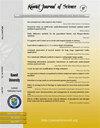佛罗里达州东北部城市扩张对森林砍伐影响时空评价的自动化地理空间工作流
IF 1.1
4区 综合性期刊
Q3 MULTIDISCIPLINARY SCIENCES
引用次数: 0
摘要
近几个世纪以来,快速的城市化将自然景观转变为不透水的表面,导致美国土地利用和土地覆盖(LULC)的广泛变化。本研究探讨了佛罗里达州东北部地区城市面积和植被覆盖度的时空变化。植被是受影响最大的土地覆盖类别,从2000年的51.39%下降到2022年的45.82%,22年间损失5.57%。相反,城市地区增长了12.14%,从2000年的9.90%增长到2022年的22.04%。土地覆盖变化最显著的是植被类,有10839 km2保持不变。然而,在研究期间,有2479 km2的植被被转化为城市地区。在县一级,杜瓦尔县的城市增长率最高,为32.50%,而麦迪逊县的森林砍伐率最高,为24.74%。拿骚县的城市增长率和森林砍伐率最低,分别为- 3.47和- 4.96。城市增长与森林砍伐率呈中等正相关(r = 0.30),表明除了城市扩张之外,还有其他因素对植被损失也有影响。这些发现强调了决策者需要平衡城市发展与环境保护,以减轻LULC的潜在影响,如地表温度升高和干旱。该研究为佛罗里达州东北部城市化和森林砍伐的时空动态提供了新的见解,强调了可持续土地利用规划和管理策略的重要性。本研究中使用地理空间技术开发的自动化工作流程展示了有效监测和评估LULC模式的潜力,从而为可持续城市生态系统的决策提供信息本文章由计算机程序翻译,如有差异,请以英文原文为准。
Automated geospatial workflow for spatiotemporal assessment of urban expansion influence on deforestation in Northeast Florida
Rapid urbanization has transformed natural landscapes into impervious surfaces, causing widespread land use land cover (LULC) changes in the United States over recent centuries. This study explores the spatiotemporal changes in urban areas and vegetation coverage in the Northeast district of Florida. Vegetation was the most affected land cover class, declining from 51.39 % in 2000 to 45.82 % in 2022, representing a 5.57 % loss over 22 years. Conversely, urban areas increased by 12.14 %, from 9.90 % in 2000 to 22.04 % in 2022. The most significant land cover transition occurred within the vegetation class, with 10,839 km2 remaining unchanged. However, 2479 km2 of vegetation was converted to urban areas during the study period. At the county level, Duval County experienced the highest urban growth rate at 32.50 %, while Madison County had the highest deforestation rate at 24.74 %. Nassau County had the lowest urban growth and deforestation rates at −3.47 and −4.96, respectively. A moderate positive correlation (r = 0.30) was found between urban growth and deforestation rates, suggesting that other factors besides urban expansion contribute to vegetation loss. These findings highlight the need for policymakers to balance urban development with environmental conservation to mitigate the potential impacts of LULC, such as increased land surface temperature and droughts. The study provides novel insights into the spatiotemporal dynamics of urbanization and deforestation in Northeast Florida, emphasizing the importance of sustainable land use planning and management strategies. The developed automated workflow using geospatial techniques in this study demonstrates the potential for efficient monitoring and assessment of LULC patterns, thereby informing decisions for sustainable urban ecosystems
求助全文
通过发布文献求助,成功后即可免费获取论文全文。
去求助
来源期刊

Kuwait Journal of Science
MULTIDISCIPLINARY SCIENCES-
CiteScore
1.60
自引率
28.60%
发文量
132
期刊介绍:
Kuwait Journal of Science (KJS) is indexed and abstracted by major publishing houses such as Chemical Abstract, Science Citation Index, Current contents, Mathematics Abstract, Micribiological Abstracts etc. KJS publishes peer-review articles in various fields of Science including Mathematics, Computer Science, Physics, Statistics, Biology, Chemistry and Earth & Environmental Sciences. In addition, it also aims to bring the results of scientific research carried out under a variety of intellectual traditions and organizations to the attention of specialized scholarly readership. As such, the publisher expects the submission of original manuscripts which contain analysis and solutions about important theoretical, empirical and normative issues.
 求助内容:
求助内容: 应助结果提醒方式:
应助结果提醒方式:


